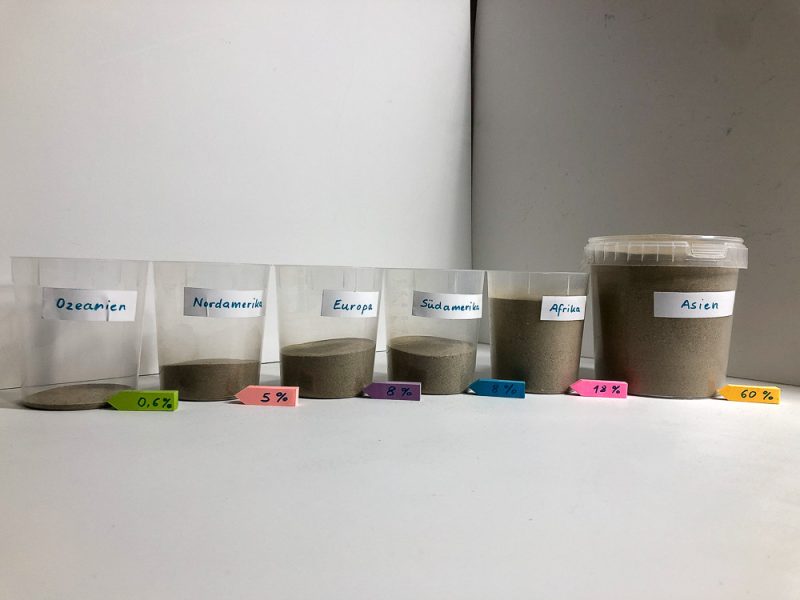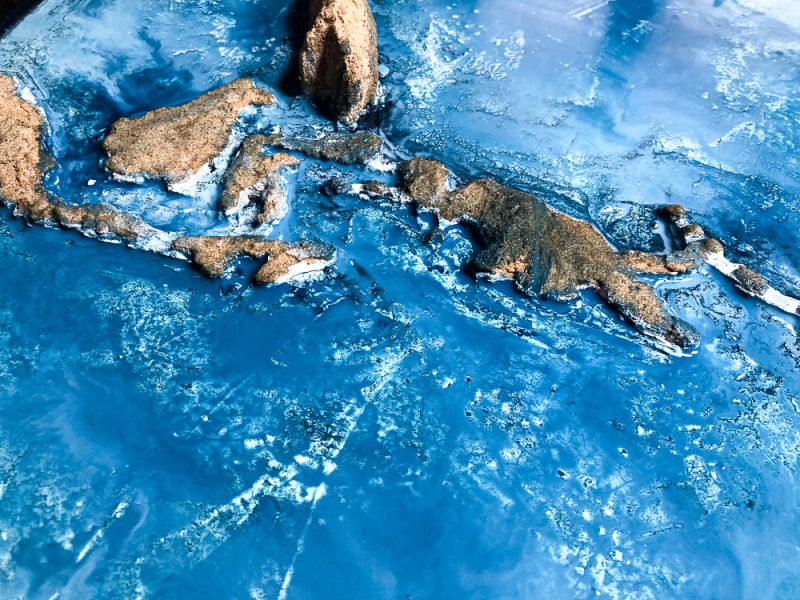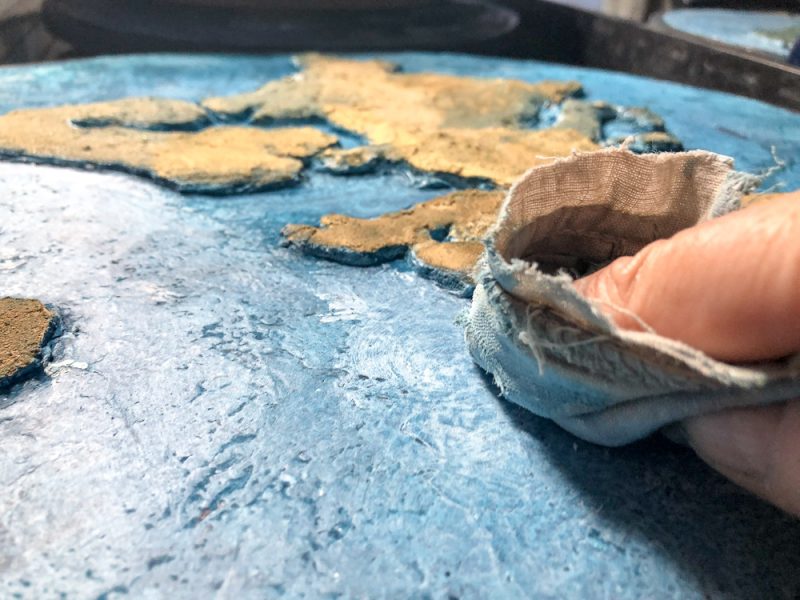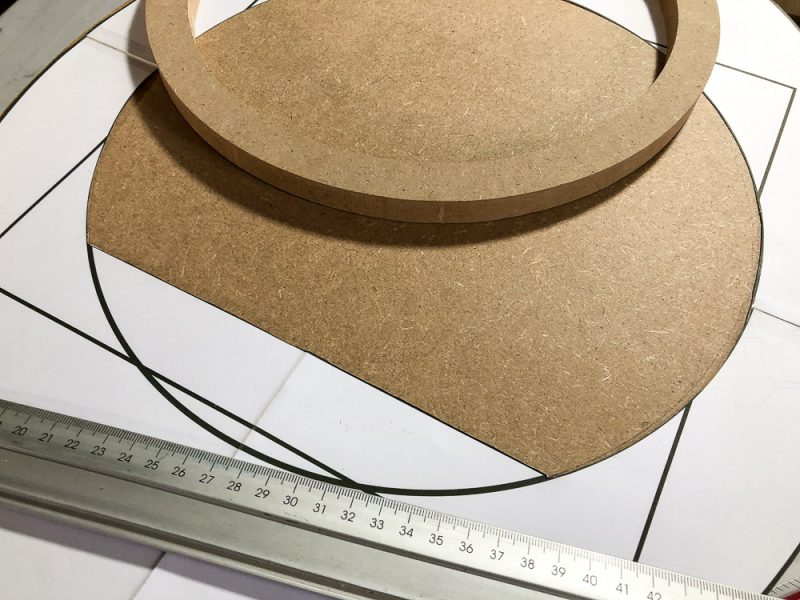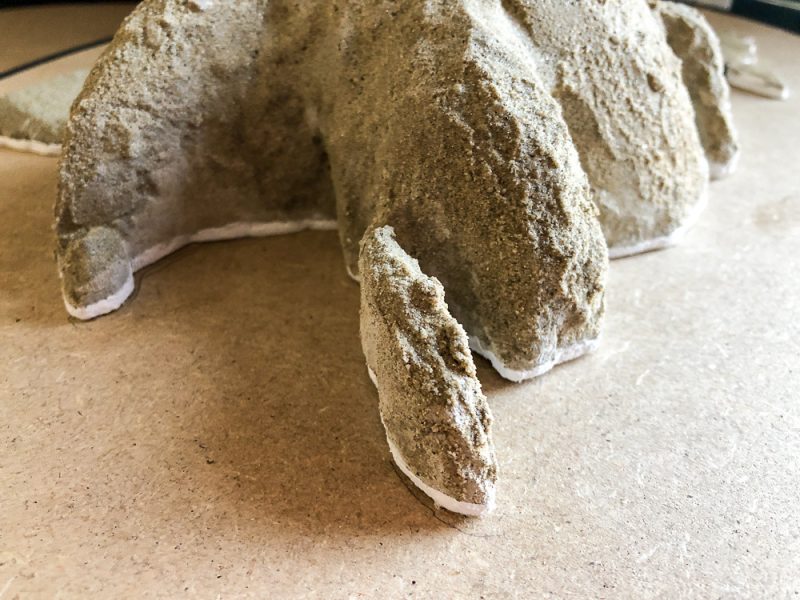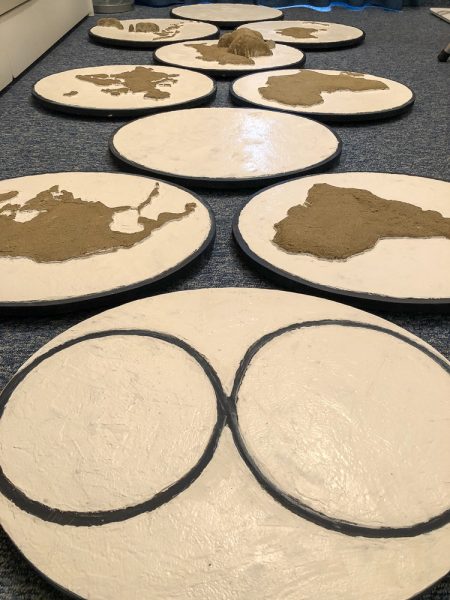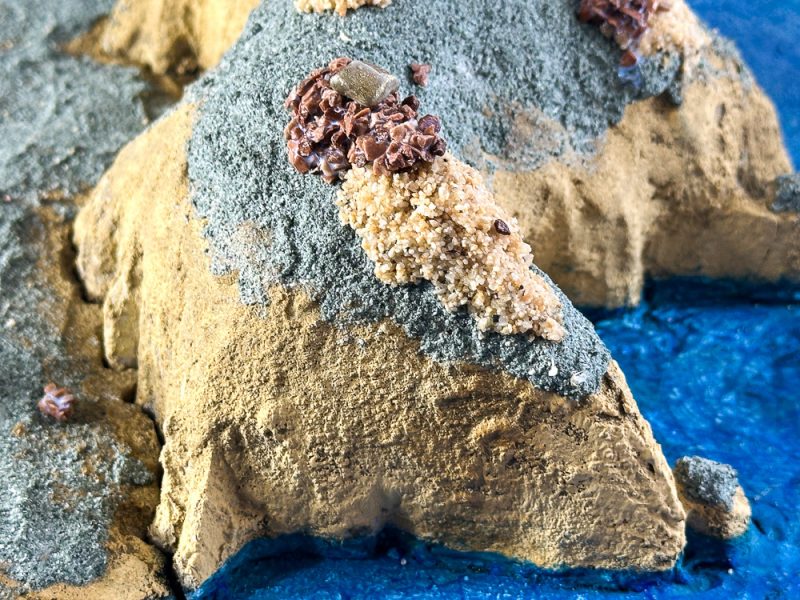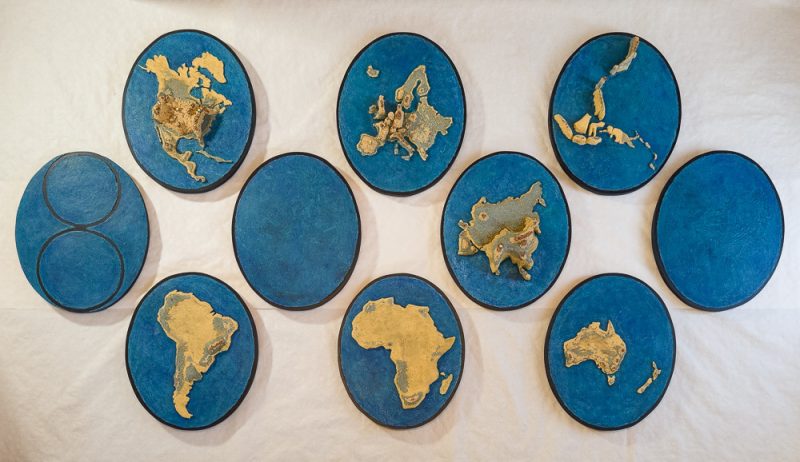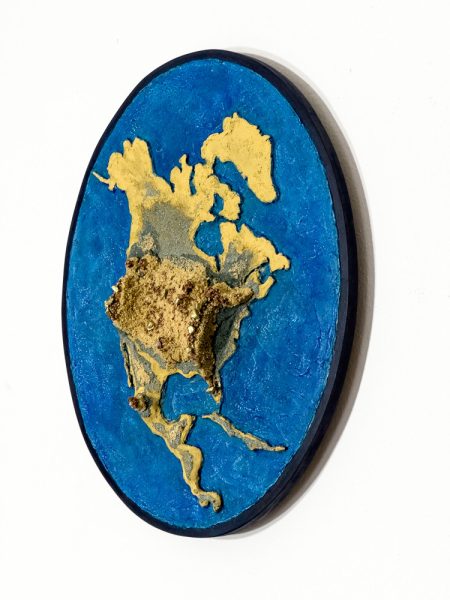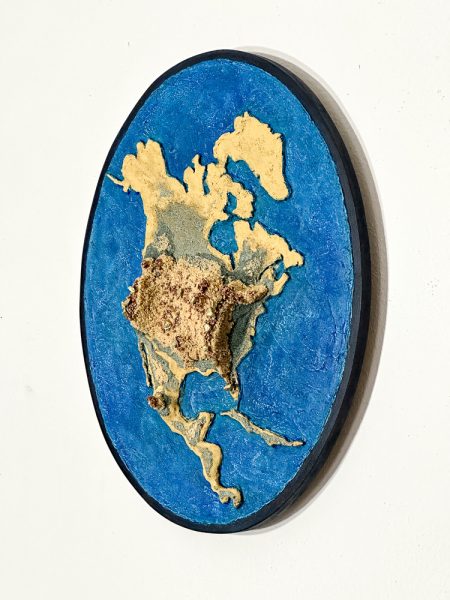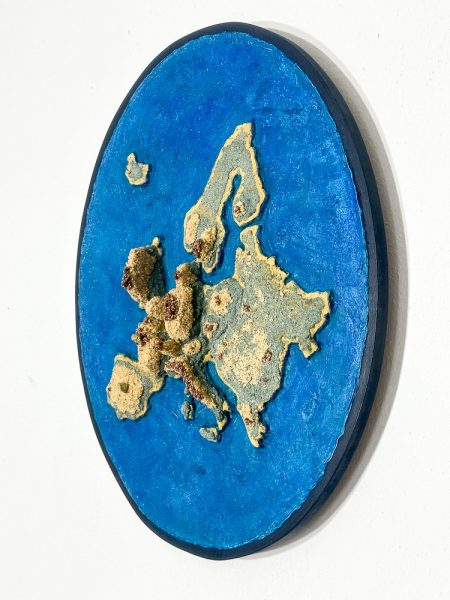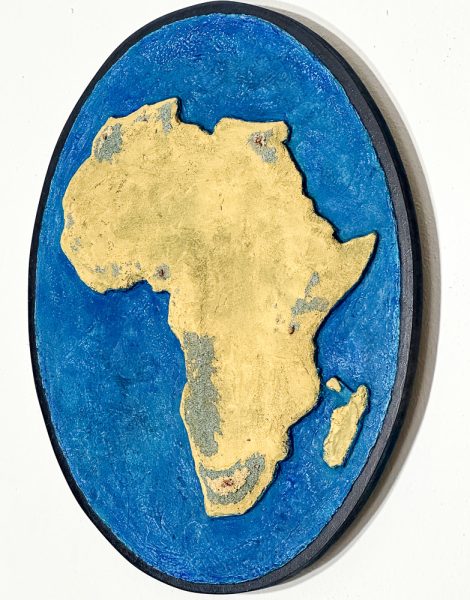Like Sand by the Sea (2025).
The artwork “Like sand by the sea” is my contribution to the exhibition “8 Billion” in the Berchtoldvilla Salzburg in July/August 2025. It consists of 10 oval MDF panels with different types of sand.
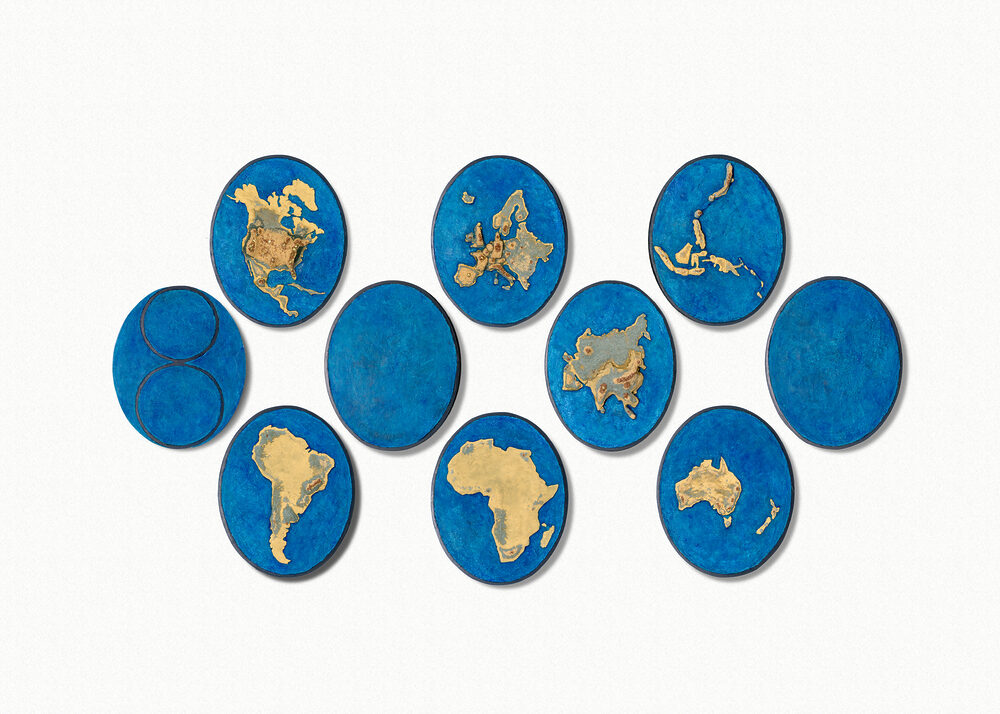
Description of the art work
The 10 oval panels show the numbers 8-0-0-0-0-0-0-0-0-0-0-0. The uneven distribution of the world’s 8 billion inhabitants is made clear by the different amounts of sand grains. The five different types of sand each having a different grain size and color visualize the population of the different continents and their income distribution.
In the three lower layers of sand (poor, middle class, millionaires), each grain of sand represents 100 people; in the two upper layers (billionaires, three-digit billionaires), they each represent one person. The larger sand size for millionaires and billionaires symbolizes their social visibility and influence.
The different types of sand illustrate that 7/8 of the world’s population live in poverty. Only an eighth have sufficient means to live. The majority of the 8 billion live in SE Asia and the Asian islands. The top billion are mainly located in the so-called “Western World” (North America, Europe, Japan), where they make up around half of the population.
Types of sand used
Each grain of the following types of sand represents a certain number of people from different income groups. There are five different types of sand.
- Quartz sand, grain size 0.1-0.5 mm (beige gray) – represents 100 people who have less than 40 Int. $ (international dollars) per day at their disposal. This income stratum of the poor makes up seven eighths (7/8) of the world’s population!!! The approximately 7 billion people were represented by 2.66 kg of quartz sand.
- Marble sand Alpine green, grain size 0.1-0.5 mm (greenish) – 100 people who have more than 40 Int. $ per day at their disposal. The approximately 1 billion people of the middle class were represented by 0.34 kg of marble sand.
- Quartzite orange, grain size 0.6-1.2 mm (yellow-orange) – each grain of sand represents 100 millionaires. The approximately 56,300,000 millionaires were represented by 0.32 kg of quartzite.
- Prugna marble split, grain size 1.8-2.5 mm (red-brown) – each grain of sand a billionaire. The 2650 billionaires were represented by 0.04 kg of marble split.
- Pebbles (gold-plated) – each pebble is a three-digit billionaire. There are currently 18 of these, 15 of whom live in the USA.
*) The International Dollar is a theoretical currency that makes local currencies and living standards comparable (ourworldindata.org). Anyone with less than 40 Int. $ at their disposal lives more or less in poverty or is at least at risk of poverty. This affects seven-eighths of the world’s population!
Special thanks go to employees of Kremer Pigmente who provided me with the basic data for the calculation. I also bought most of the materials used in this artwork from them.

Moving Insights
It was clear to me from the start that a large proportion of the 8 billion live in Asia. I’ve seen maps that illustrate this before. The graphic by @justforstev24 in particular makes this very clear. India and China are the epicenters of a quarter of the world’s population each. Together with their neighboring countries, they make up half of the world’s population.

The fact that only one eighth of the world’s population really has enough to live on was one of the moving insights I had beforehand. When I then began to measure the quantities of sand for the various continents, I also measured the “upper” layers of sand with quartz sand (instead of the other types of sand) purely out of curiosity. This resulted in the following photos, in which you can see the relationship between rich and poor. People who live in the so-called “Western world” usually underestimate how high the proportion of poor people is.
Genesis of “Like Sand by the Sea”
The exhibition at the Berchtoldvilla entitled “8 Billion” required a special approach. My considerations and calculations began the previous year and finally resulted in “Like Sand by the Sea”, my largest work of art to date. Depending on the density of the hanging, it measures approximately 120 x 280 cm.
As I had already made several artworks with different types of sand in 2024, this gave rise to the idea of representing the world’s 8 billion inhabitants with sand. But how do you calculate 8 billion grains of sand? Counting 8,000,000,000 grains of sand was not an option. I slowly worked my way towards the final result, using several calculation variants and a test piece. The grains of sand had to be as large as possible so that they could be seen with the naked eye, but small enough so that the end result would still fit in the house or on the wall.
The first calculation variant had a total weight of 120 tons or 75 cubic meters. That would correspond to a room with a floor area of 5 by 5 meters and a height of 3 meters. So that wasn’t really an option.
Trials and errors
Then came several other variants until I formulated my plan for a provisional submission. However, I had to revise even that when I placed a bag of quartz sand next to the wooden panel. I was too optimistic about how many kilograms I could attach to a wooden panel.

Even if you “only” need 8.5 kg for this continent, it is not realistic that you can apply the corresponding mass to the MDF board within the limits of the continent.
In the end, with a heavy heart, I decided on a smaller sand size. Despite this reduction, the end result (all 10 panels) weighs 27 kg.
It also soon became clear that my usual binder could not sufficiently bind such a thick layer of sand.
So I decided to replace some of the sand with cement in the populous countries, which I also secured with screws in some cases.
I soon realized that such a thick mass of cement does not adhere to the specified limits, but spreads out during the drying process and becomes a shapeless lump.

Genesis of the continents
I solved the above challenge by first cutting out all the continents from a plywood panel. Then I applied the first type of sand (lowest income group) before mounting it on the MDF boards. In this way, I also managed to confine the thicker sand and cement masses to the boundaries of the continents.
Even before attaching the continents, I had to carry out all the processing steps on the back of the panels – that means attaching a spacer ring from a round canvas and “wallbuddies” (jagged triangles for hanging), as well as the labeling and signature. As soon as there are several layers of sand on the front, I could no longer apply pressure to the back.
Creation of the sea surface
Next, the sea surfaces were given a sand primer. Once this was dry, I was able to apply the marble powder texture and the Intonaco layer on top.
This is what the interim result looked like:
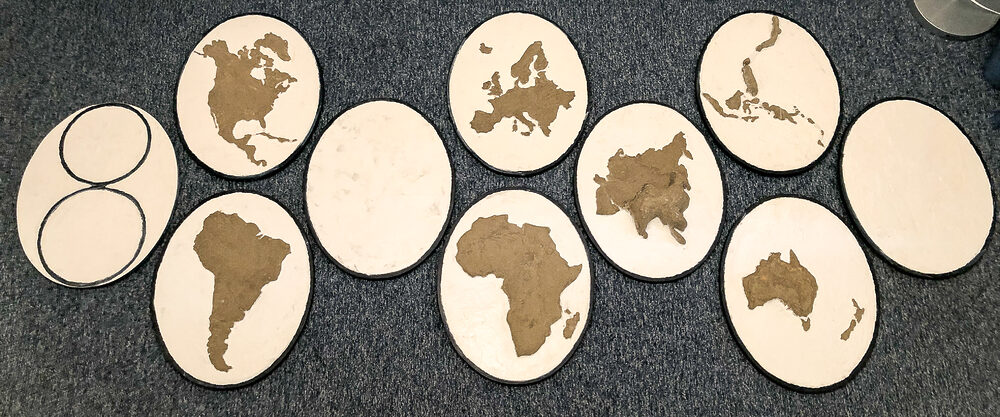
After a longer drying time, the cracks typical for Intonaco appeared in the material, which I emphasized with ink. Unfortunately, this resulted in an unintentional discoloration of the continents. The sand of the continents soaked up the liquid ink layer. I think this is called the capillary effect. That was not planned! I then had to correct this undesirable development with pigments and tempera. I also had to use pigments on the parts where I used cement, because the cement made the quartz sand lighter in color.
When everything was dry and the sand layers had the planned color again, I was able to apply the cold wax glazes to the sea surfaces.
Further development of the continents
I then gradually added the appropriate amounts of sand to all the continents for the other income layers. Finally, I added the gold-plated pebbles. When distributing the measured quantities of sand on the continents, I mainly took into account the population density as shown in the following illustration.
![By Tobias Jung [CC BY-SA 4.0 (http://creativecommons.org/licenses/by-sa/4.0)], via map-projections.net](https://www.juttabluehberger.at/wp-content/uploads/patterson-popdens-big.png)
In some cases – especially with the islands – it was also necessary for me to look for more precise information on individual countries in order to better control the sand distribution. Nevertheless, the artwork is of course not an exact science.
This was particularly difficult with countries that consist of several parts. I also had to rely more on guesswork for the distribution of the upper income brackets and pebbles in large countries because there are no statistics on the distribution within a country. Also, the rich often have more than one residence.
Below are a few selected examples of population densities compared to Austria.
| Country | People per Square Kilometer |
|---|---|
| Austria | 110 |
| Australia | 3 |
| USA | 36 |
| Bangladesh | 1,300 |
| Singapur | 7,850 |
| Monaco | 18,680 |
Here are various intermediate stages during work:
Like Sand by the Sea
After several months of work, this resulted in my largest work to date, “Like Sand by the Sea”.
Depending on the distances between the panels (50 x 40 cm each), the installation can be hung at a minimum of 110 x 240 centimeters or, as in the exhibition, at around 120 x 280 or even more. The individual panels weigh between 2.3 and 4 kg. All together they weigh just over 27 kg.
With this work, I would like to create a tribute to the unimaginable number of people worldwide. Above all, I hope that it will open the eyes of the exhibition visitors, who probably only come from the “Western world”, to the fact that we are not alone on the planet. We are actually a minority. And we are incredibly privileged!


